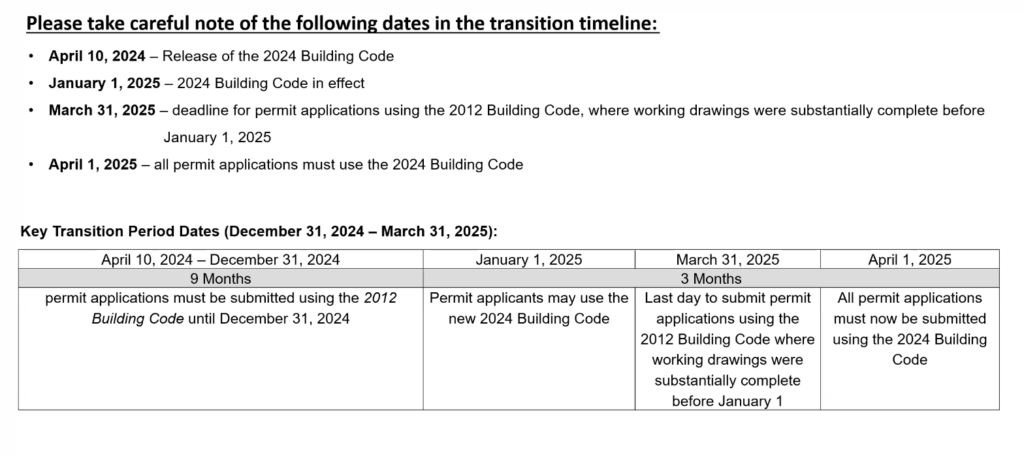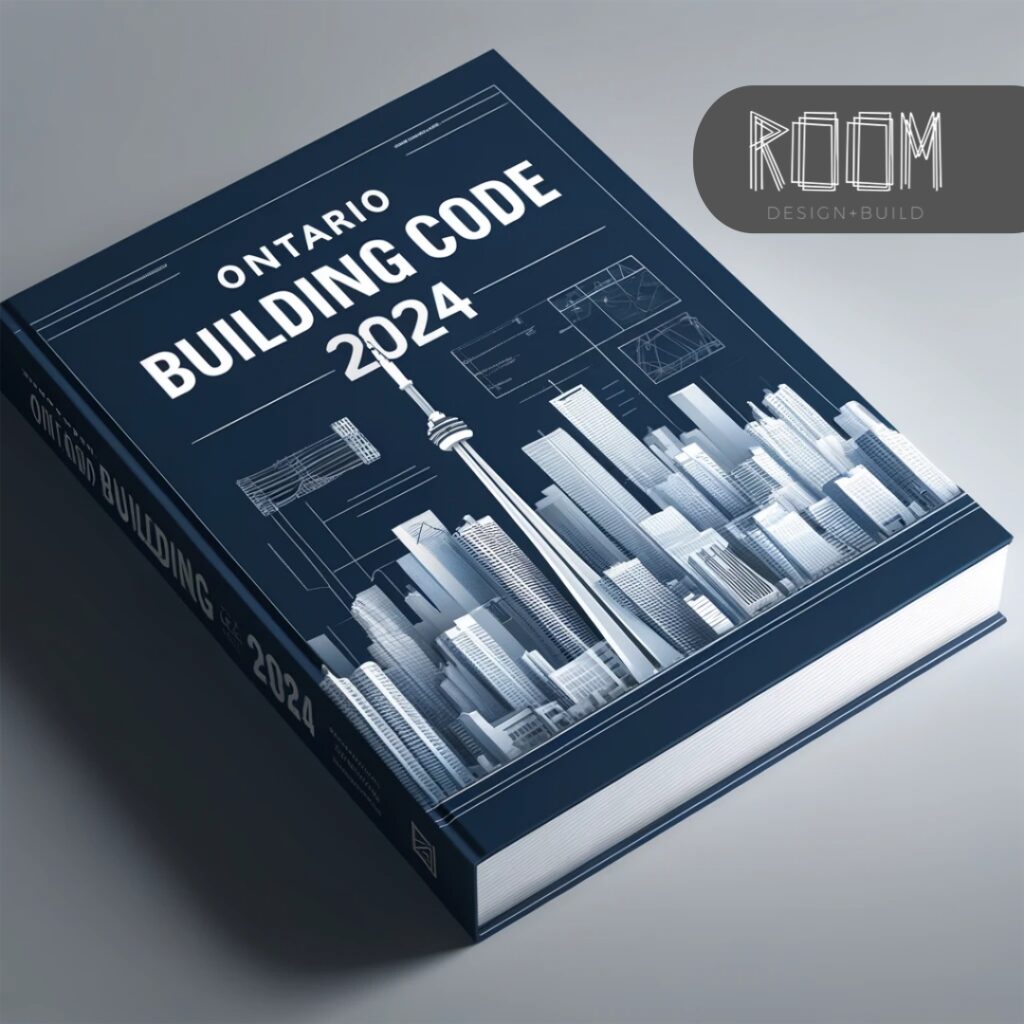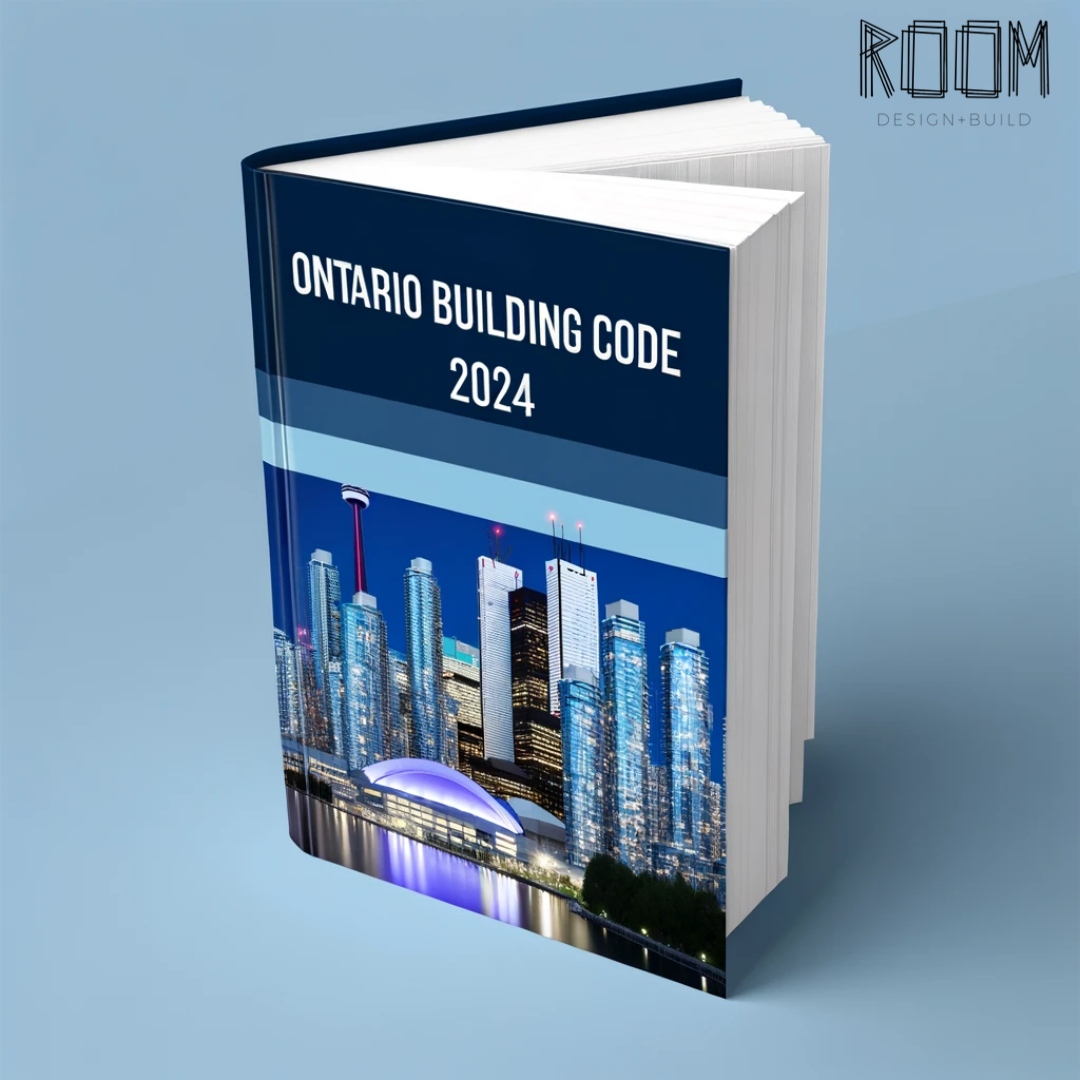Table of Contents
Welcome to our comprehensive guide on the 2024 Ontario Building Code. This update introduces pivotal changes aimed at enhancing building standards, elevating safety measures, and fostering innovation within the construction sector across Ontario. As we delve into these revisions, you’ll gain insights into how they may impact your current and future projects. These modifications are crucial for anyone involved in building and design, including architects, builders, and developers. Understanding these changes will ensure that your projects not only comply with the new regulations but also benefit from the latest standards in safety and efficiency.
Farm Buildings

The 2024 Ontario Building Code introduces specific rules for large and small farm buildings. Large farm buildings are now subject to stricter safety and design standards. These new requirements focus on strong structures and better fire safety to protect both the building and its occupants. This means larger farm buildings will be safer and more robust.
Small farm buildings, on the other hand, will continue to follow the existing rules. This division simplifies the regulations, making it easier for farm owners and builders to understand what is expected for each type of building. It ensures that every farm building is safe and efficient, suitable for its specific use, without adding unnecessary costs.
Housing and Accessibility
The 2024 Ontario Building Code has been updated to align more closely with national standards, significantly enhancing the consistency across Canada. However, it retains a unique aspect—flexibility in the size of housing units. This thoughtful balance supports the province’s goals to boost the housing supply without escalating construction costs unnecessarily. By allowing varied suite sizes, Ontario caters to diverse housing needs and preferences, facilitating the development of both large and small dwellings.
Moreover, the code introduces substantial improvements in accessibility, drawing from the 2020 National Building Code. These enhancements ensure that new buildings are more accessible to everyone, regardless of mobility. The updated requirements focus on creating inclusive environments that promote ease of access and movement for all individuals. These changes not only improve the quality of life for people with disabilities but also ensure a broader range of the population can enjoy modern, accessible living spaces. This move towards greater accessibility is a significant step forward in making Ontario a more inclusive community.
Fire Safety and Structural Design

The 2024 Ontario Building Code introduces significant updates to fire safety, fully aligning with the national standards for fire protection systems. This comprehensive overhaul includes the mandatory installation of modern sprinkler systems and fire alarms in more types of buildings than ever before. By harmonizing with national codes, Ontario ensures that its fire safety measures offer top-notch protection, helping prevent tragedies and minimize damage during fire incidents. These updated regulations are designed to keep up with the latest in fire safety technology and practices, making buildings safer for everyone.
In addition to fire safety, the code has also been updated to better address structural challenges related to natural disasters. It now requires buildings to be designed to withstand the specific seismic and wind load conditions of their locations. This means that structures will be more resilient against earthquakes and strong winds, reflecting a significant advancement in public safety. These changes come from a detailed review of the latest national seismic data and wind load statistics, ensuring that all new buildings are capable of standing up to the forces of nature more effectively than before.
Transition Period and Training

The 2024 Ontario Building Code is set to take effect on January 1, 2025. To facilitate a smooth transition, there will be a period during which both the 2012 and the 2024 codes may be used. This transition period extends until March 31, 2025, allowing builders, designers, and other industry professionals ample time to adjust to the new requirements. This thoughtful approach provides flexibility and ensures that ongoing projects are not disrupted by sudden regulatory changes. It also allows for the completion of projects already underway under the 2012 code, ensuring that these can proceed without needing to conform retrospectively to the new standards.
Additionally, the Ontario government is committed to supporting the construction industry through this change by providing comprehensive training programs. These training initiatives are designed to educate and prepare all stakeholders for the full implementation of the 2024 code. The training will cover the major changes in the code, focusing on practical applications and compliance strategies. This proactive educational effort aims to build capacity within the industry, ensuring that the workforce is well-equipped to meet the new code’s standards, thus promoting a higher level of compliance and enhancing the overall safety and quality of building construction in Ontario.
Summary

The introduction of the 2024 Ontario Building Code represents a significant milestone in the evolution of construction standards within the province. By setting new benchmarks in safety, design, and sustainability, the updated code ensures that Ontario continues to lead in building safe, efficient, and innovative structures. For construction professionals and project owners, staying abreast of these changes is not just about compliance; it’s about seizing the opportunity to enhance the quality and performance of their projects. The new code’s emphasis on modernization and efficiency can help drive competitiveness in the market, while also addressing important issues like environmental sustainability and accessibility.
Moreover, the effective navigation of these changes requires a proactive approach. Engaging with the training and resources provided by the government will be key to understanding and implementing the nuances of the new code. By preparing in advance and adapting to these updates, stakeholders in the construction industry can ensure that their projects not only meet the legal requirements but also set new standards in quality and innovation. This readiness will not only safeguard their investments but also contribute positively to Ontario’s architectural landscape, reflecting a commitment to excellence and safety in construction.
Reference
- Ontario Ministry of Municipal Affairs and Housing.
How We Can Help
Room Design Build is an architectural design and build firm located in Toronto. If you need more information on design and build, contact us today and learn how we can help you.
The information provided above is of a general nature and should not be considered as advice. Each transaction or situation is unique and requires specific advice to meet your specific needs. Therefore, if you have questions about residential and commercial construction, consulting with an expert in the field is recommended.


